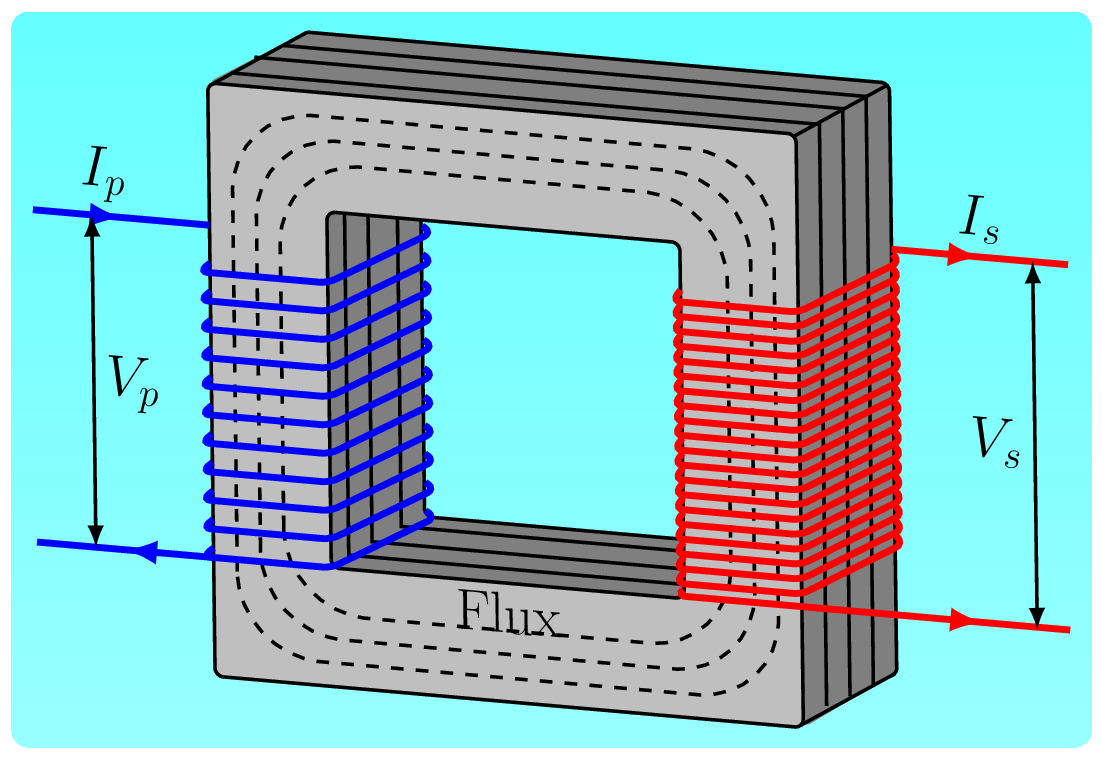Subsection 5.3.3 Transformer
A transformer is an electrical appliance which converts large current at low voltage to low current at high voltage, and vice versa. It uses the principle of electromagnetic induction to transform electrical energy from one circuit to another one. An AC current is needed to operate a transformer. In AC current direction of current is keep changing which changes the magnetic field generated in the primary coil of the transformer. Such a changing magnetic field induces the current in the secondary coil of the transformer. A typical transformer consists of a two or more coils of insulated wire wound on a laminated iron core. An alternating (AC) voltage which is to be reduced or increased is connected to the coil, called the primary coil or input coil. This coil magnetizes the iron core. A voltage is then induced in the other coil, called the secondary or output coil. The change of voltage (or voltage ratio) between the primary and secondary coils depends on the turns ratio of their two coils.
Transformer4
www.falstad.com/circuit/e-transformer.html
\begin{equation}
\frac{V_p}{V_s}=\frac{N_p}{N_s}\tag{5.3.1}
\end{equation}

\begin{align*}
P_o\amp = P_i\\
or, I_pV_p\amp = I_sV_s\\
or, \frac{V_p}{V_s} \amp =\frac{I_s}{I_p}
\end{align*}
\begin{equation}
\therefore \quad \frac{V_p}{V_s}=\frac{I_s}{I_p}=\frac{N_p}{N_s}\tag{5.3.2}
\end{equation}
see equation (5.2.5) for electrical power.
